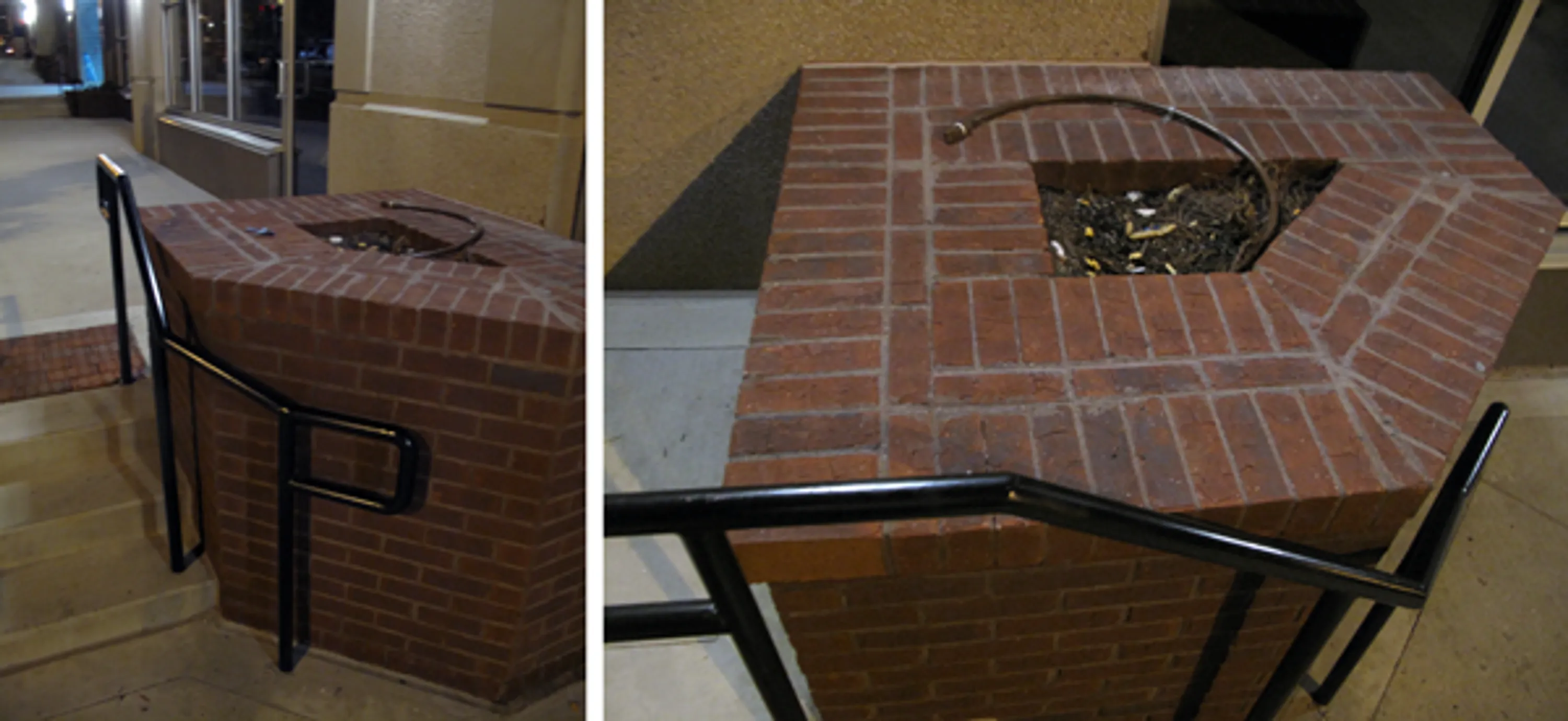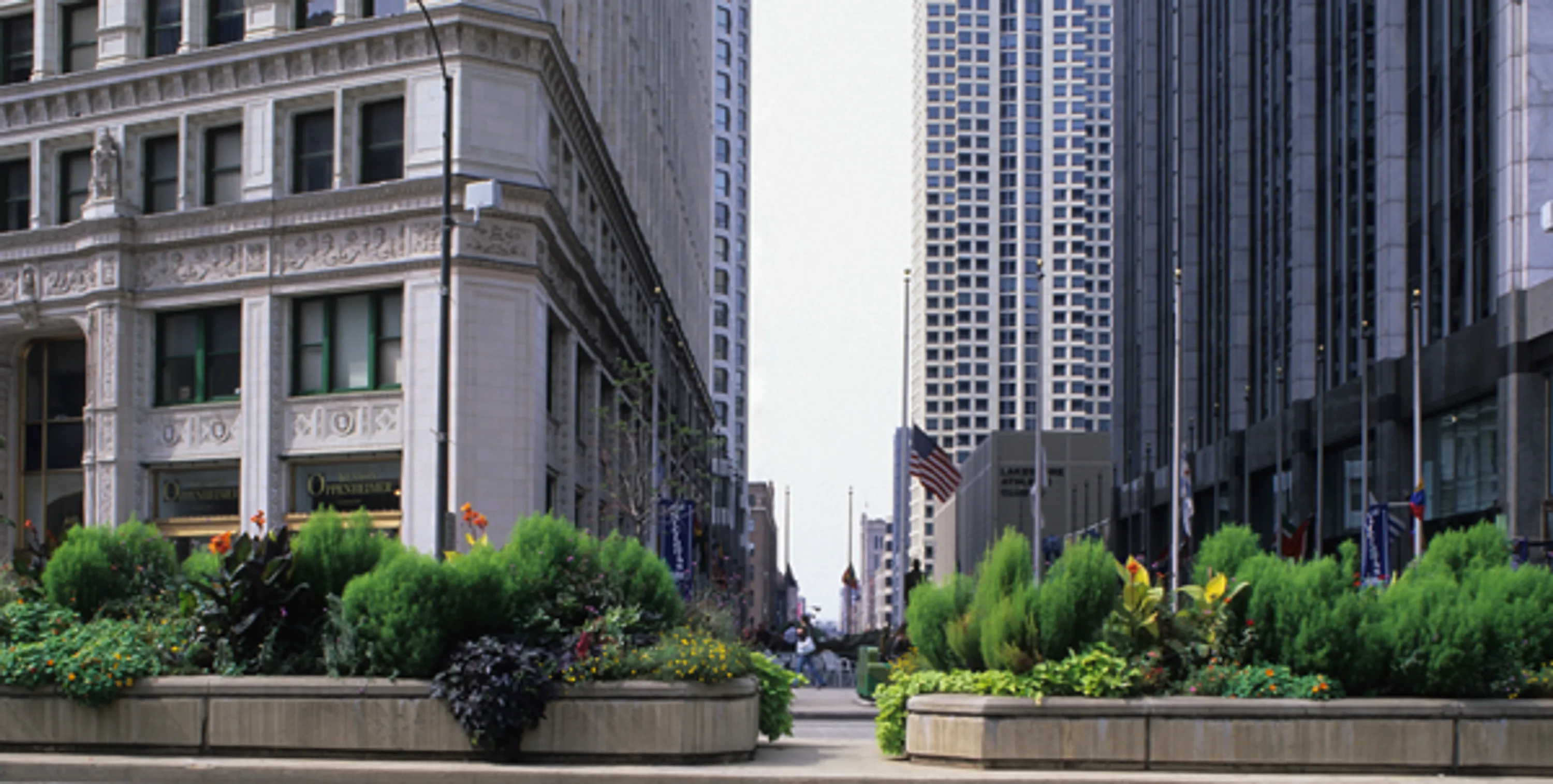In contrast, the street below is also a two-lane road, but the plantings, designed to distinguish the primary artery between downtown and the airport in Des Moines, make a statement from both within the car (plantings are elevated to be visible to drivers), and from the sidewalks where neighborhood residents encounter them. In this case, massing and scale work together to make a distinctive environment.



